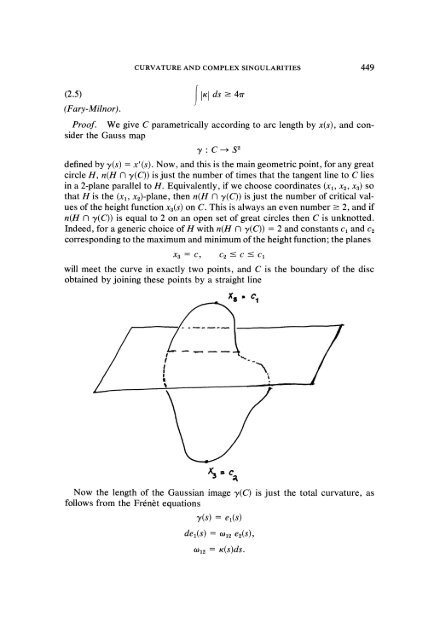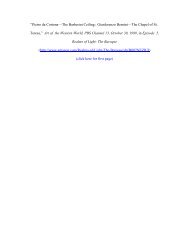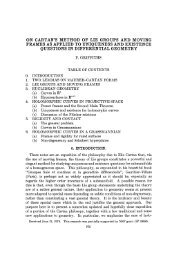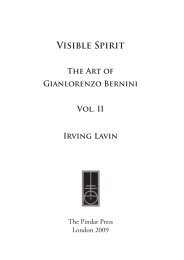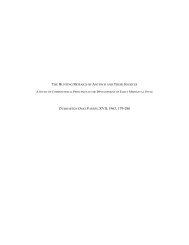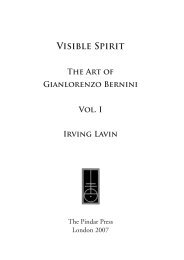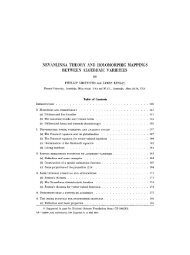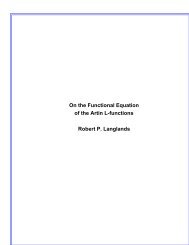View PDF - Project Euclid
View PDF - Project Euclid
View PDF - Project Euclid
Create successful ePaper yourself
Turn your PDF publications into a flip-book with our unique Google optimized e-Paper software.
CURVATURE AND COMPLEX SINGULARITIES 449<br />
(2.5) | KI ds >- 47r<br />
!<br />
(Fary-Milnor).<br />
Proof.<br />
We give C parametrically according to arc length by x(s), and consider<br />
the Gauss map<br />
y C-- S<br />
defined by y(s) x’ (s). Now, and this is the main geometric point, for any great<br />
circle H, n(H f3 y(C)) is just the number of times that the tangent line to C lies<br />
in a 2-plane parallel to H. Equivalently, if we choose coordinates (Xl, x2, x3) so<br />
that/4 is the (xa, x)-plane, then n(I-I N y(C)) is just the number of critical values<br />
of the height function x3(s) on C. This is always an even number _> 2, and if<br />
n(/4 C) y(C)) is equal to 2 on an open set of great circles then C is unknotted.<br />
Indeed, for a generic choice of/4 with n(/4 y(C)) 2 and constants ca and cz<br />
corresponding to the maximum and minimum of the height function; the planes<br />
2 3 C C2 -< C--< C<br />
will meet the curve in exactly two points, and C is the boundary of the disc<br />
obtained by joining these points by a straight line<br />
Now the length of the Gaussian image y(C) is just the total curvature, as<br />
follows from the Fr6n6t equations<br />
y(s) ea(s)<br />
dea(s) ooa ez(s),<br />
o (s)ds.


